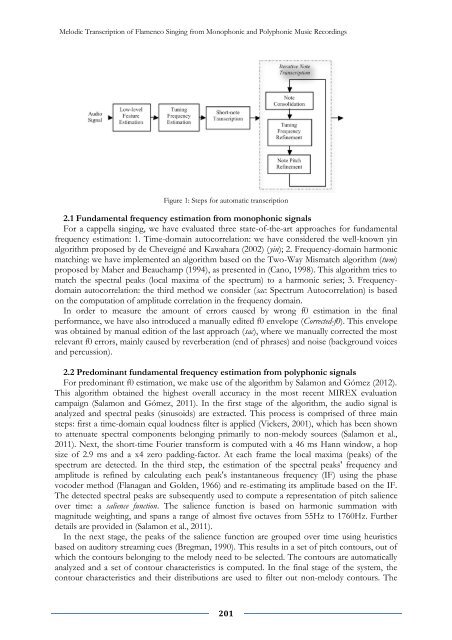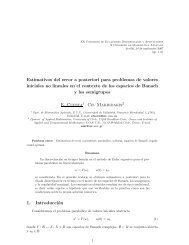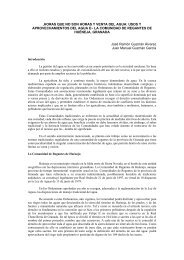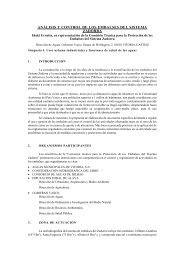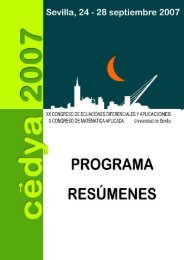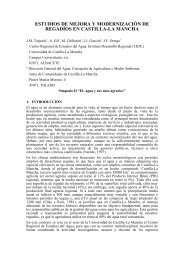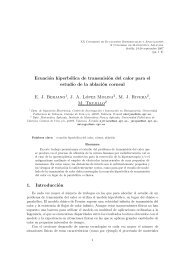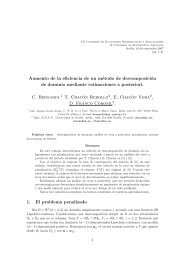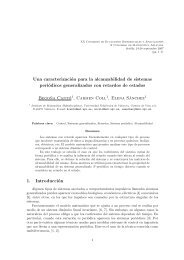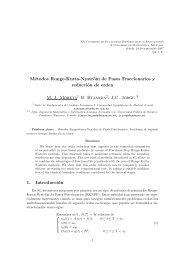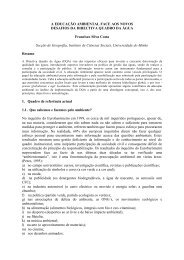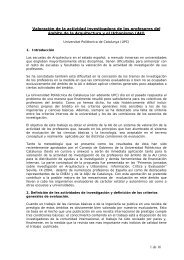LIBRO DE ACTAS (pdf) - Universidad de Sevilla
LIBRO DE ACTAS (pdf) - Universidad de Sevilla
LIBRO DE ACTAS (pdf) - Universidad de Sevilla
Create successful ePaper yourself
Turn your PDF publications into a flip-book with our unique Google optimized e-Paper software.
Melodic Transcription of Flamenco Singing from Monophonic and Polyphonic Music Recordings<br />
Figure 1: Steps for automatic transcription<br />
2.1 Fundamental frequency estimation from monophonic signals<br />
For a cappella singing, we have evaluated three state-of-the-art approaches for fundamental<br />
frequency estimation: 1. Time-domain autocorrelation: we have consi<strong>de</strong>red the well-known yin<br />
algorithm proposed by <strong>de</strong> Cheveigné and Kawahara (2002) (yin); 2. Frequency-domain harmonic<br />
matching: we have implemented an algorithm based on the Two-Way Mismatch algorithm (twm)<br />
proposed by Maher and Beauchamp (1994), as presented in (Cano, 1998). This algorithm tries to<br />
match the spectral peaks (local maxima of the spectrum) to a harmonic series; 3. Frequencydomain<br />
autocorrelation: the third method we consi<strong>de</strong>r (sac: Spectrum Autocorrelation) is based<br />
on the computation of amplitu<strong>de</strong> correlation in the frequency domain.<br />
In or<strong>de</strong>r to measure the amount of errors caused by wrong f0 estimation in the final<br />
performance, we have also introduced a manually edited f0 envelope (Corrected-f0). This envelope<br />
was obtained by manual edition of the last approach (sac), where we manually corrected the most<br />
relevant f0 errors, mainly caused by reverberation (end of phrases) and noise (background voices<br />
and percussion).<br />
2.2 Predominant fundamental frequency estimation from polyphonic signals<br />
For predominant f0 estimation, we make use of the algorithm by Salamon and Gómez (2012).<br />
This algorithm obtained the highest overall accuracy in the most recent MIREX evaluation<br />
campaign (Salamon and Gómez, 2011). In the first stage of the algorithm, the audio signal is<br />
analyzed and spectral peaks (sinusoids) are extracted. This process is comprised of three main<br />
steps: first a time-domain equal loudness filter is applied (Vickers, 2001), which has been shown<br />
to attenuate spectral components belonging primarily to non-melody sources (Salamon et al.,<br />
2011). Next, the short-time Fourier transform is computed with a 46 ms Hann window, a hop<br />
size of 2.9 ms and a x4 zero padding-factor. At each frame the local maxima (peaks) of the<br />
spectrum are <strong>de</strong>tected. In the third step, the estimation of the spectral peaks' frequency and<br />
amplitu<strong>de</strong> is refined by calculating each peak's instantaneous frequency (IF) using the phase<br />
voco<strong>de</strong>r method (Flanagan and Gol<strong>de</strong>n, 1966) and re-estimating its amplitu<strong>de</strong> based on the IF.<br />
The <strong>de</strong>tected spectral peaks are subsequently used to compute a representation of pitch salience<br />
over time: a salience function. The salience function is based on harmonic summation with<br />
magnitu<strong>de</strong> weighting, and spans a range of almost five octaves from 55Hz to 1760Hz. Further<br />
<strong>de</strong>tails are provi<strong>de</strong>d in (Salamon et al., 2011).<br />
In the next stage, the peaks of the salience function are grouped over time using heuristics<br />
based on auditory streaming cues (Bregman, 1990). This results in a set of pitch contours, out of<br />
which the contours belonging to the melody need to be selected. The contours are automatically<br />
analyzed and a set of contour characteristics is computed. In the final stage of the system, the<br />
contour characteristics and their distributions are used to filter out non-melody contours. The<br />
201


